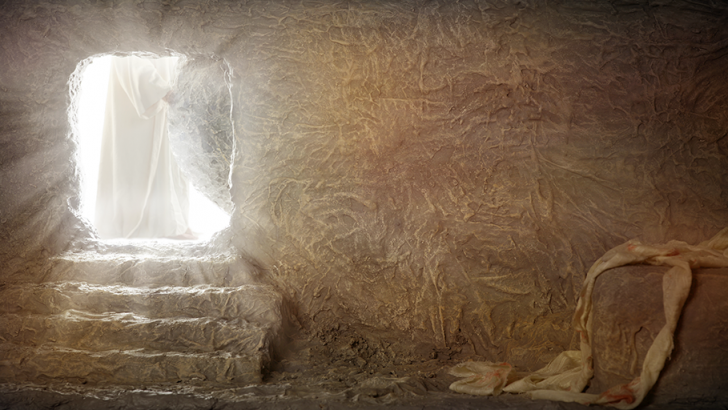We must remember, “our bodies, yours and mine, at the final judgement, will be raised from the dead and reunited with our souls”, writes Andrew O’Connell
The Paschal Triduum, culminating in the Exsultet at the Easter Vigil, is a beautiful and profound spiritual experience. At its heart is the stunning reality of the Resurrection of the crucified Christ.
Meditating on the Resurrection focuses our minds on the great promise of eternal life with God. In his encyclical Spe Salvi, Pope Benedict pointed out that, for many people today, eternal life seems “more like a curse than a gift”. Eternal life, as an ultimate reality, is not just unbelievable but, for many, also unattractive.
Is there perhaps an acknowledgement of that problem in the way we sometimes present the Resurrection, without denying its historicity, as a metaphor for a fresh start in our own lives? It is undeniably a powerful metaphor. It is springtime: the season rhymes with the sentiment. Winter, like death, has been overcome. But, though powerful and encouraging, this is only a metaphor.
When we do get around to speaking of the Resurrection and the afterlife, we typically describe Christ’s Resurrection as the great defeat of death. Because of it, we can now even taunt death, singing: “Where is your sting?”
But when we speak of the defeat of death, we tend to focus almost exclusively upon an image of the hereafter based on a mystical experience for our souls after the death of our bodies.
We seem to forget the most fundamental meaning of the Resurrection: our bodies, yours and mine, at the final judgement, will be raised from the dead and reunited with our souls.
Yes, we mention this during the Creed and we hear it mentioned during the Prayers of Commendation at a requiem Mass when we affirm that the deceased, “together with all who have died in Christ, will rise with Him on the last day”.
But, outside of this, it’s not often we talk about our own Resurrection. Perhaps it’s easier to speak of Christ’s Resurrection than our own!
We are familiar with St Paul’s letter to the Corinthians in which he writes: “If Christ has not been raised, your faith is futile”. But before that he writes, “For if the dead are not raised, then Christ has not been raised,” and, if that happens, “Those also who have fallen asleep in Christ have perished”.
We live in a sentimental age, consoling ourselves with the thought that everyone who dies passes immediately to a mystical eternal happiness. It is odd that we rarely console ourselves with the prospect of a corporal Resurrection. Perhaps it is because it is so difficult to comprehend. The Catechism acknowledges this, saying: “It exceeds our imagination and understanding.”
The massive claim of Christianity is that the Resurrection was not a mind-blowing, once-off miracle. Its significance relates to our bodies which, like Christ’s, will one day leave their tombs.
Resurrection will be our reality one day too.
Road frontage
It might not be the most romantic chat-up line, but “have you road frontage?” has long been the financially-minded suitor’s early test of eligibility for marriage.
With most churches facing onto busy streets and roads, our parishes possess no shortage of road frontage.
In an Ireland where a significant number of people will have been unaware it was Holy Week recently, that passing traffic is an important audience to reach.
Some parishes use signage to advertise events or carry a ‘thought for the day’. It’s worth doing.
And doing well.
Signage matters An increasing number of churches in Dublin are making use of their on-street location to communicate with passers-by. For several months, there have been large signs advertising the availability of Confession outside the Blessed Sacrament Chapel on busy Bachelor’s Walk. Similarly, St Teresa’s Church in Clarendon St is making use of its prime location to advertise its Confession times. Churches like St Andrew’s on Westland Row, located alongside Pearse Street station, also use signage to announce Mass times.
These notices are clever. Even if they never drew anyone inside, they send a message that churches are not museums – they are living places of worship.



